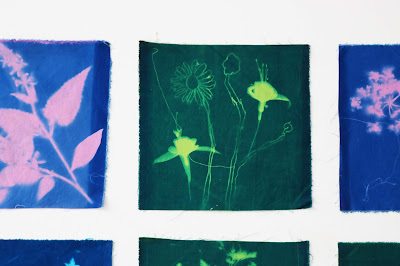 |
| Claire is a Front of House and Gallery Assistant here at West Cork Arts Centre |
Claire arrived in Ireland from London in 1989 before eventually settling in West Cork to embark on an art career. A graduate of the DIT Visual Art programme in Sherkin Island, Claire has recently joined the team here at West Cork Arts Centre. The arrival of the Coming Home exhibition in June was her first introduction to Irish Famine history. The exhibition approaches the solemnity of An Gorta Mor by discussing the socio, economic and political landscape of Ireland in the nineteenth century. Claire began actively engaging with the historical context of the exhibition in order to interact with visitors and out of personal interest. This research coincided with the visit of a relative from New Zealand who had an interest in the family tree. Claire had a vague recollection of an Irish ancestor being mentioned somewhere in her family history. Eventually she discovered John Lehane her great-great grandfather was born in Cork in 1842 and her great-great grandmother Jane O' Connor was born in Killarney in 1840.
Coming Home caused Claire to realize that her great-great grandparents were children at the time of the Great Famine. Shocked by this revelation, she delved deeper into her family's past to discover that her family, like so many others, emigrated in the hopes of finding a better life. Their destination was not the much acknowledged Liverpool or Ellis Island, but Argentina. The South American country is today home to the fifth-largest Irish community in the world. Claire's family is among the many that settled and raised a family in these foreign environs, trading the small island nation for the immense plains, deserts, forests and tundra of Argentina . Eventually Claire's family found themselves further South in the Falkland islands. It was Claire's grandmother who ventured back across the Atlantic Ocean to settle in South Hampton and now, remarkably it is Claire who has set down roots in Cork.
The exhibition's title Coming Home can be understood in a new personal light for Claire as she is the first generation of her family to 'come home' following the cataclysmic event that was the Great Irish Famine.
Claire's story is the story of many. Emigration is one of themes of Coming Home that has become a perspective for understanding events like the Great Irish Famine. Stories like these remind us how small the world can be and how interdependent we are as human beings. Narratives unfold in far flung corners of the world that effect and involve all of us, the world is in a constant flux and those in riches today may be in rags tomorrow. The fragile nature of the status quo has caused many visitors to consider the European emigration crisis today in relation to Ireland's emigration crisis in the nineteenth century. Unfortunately the story of Claire's family is repeating around the world today with people being forced to leave their homes in the face of war, famine or persecution.
It is this ability to address the past and analyse the present that has caused Coming Home to become poignant visitor experience. If you haven't already, experience it for yourself before the exhibition closes this Saturday!
Coming Home caused Claire to realize that her great-great grandparents were children at the time of the Great Famine. Shocked by this revelation, she delved deeper into her family's past to discover that her family, like so many others, emigrated in the hopes of finding a better life. Their destination was not the much acknowledged Liverpool or Ellis Island, but Argentina. The South American country is today home to the fifth-largest Irish community in the world. Claire's family is among the many that settled and raised a family in these foreign environs, trading the small island nation for the immense plains, deserts, forests and tundra of Argentina . Eventually Claire's family found themselves further South in the Falkland islands. It was Claire's grandmother who ventured back across the Atlantic Ocean to settle in South Hampton and now, remarkably it is Claire who has set down roots in Cork.
The exhibition's title Coming Home can be understood in a new personal light for Claire as she is the first generation of her family to 'come home' following the cataclysmic event that was the Great Irish Famine.
Claire's story is the story of many. Emigration is one of themes of Coming Home that has become a perspective for understanding events like the Great Irish Famine. Stories like these remind us how small the world can be and how interdependent we are as human beings. Narratives unfold in far flung corners of the world that effect and involve all of us, the world is in a constant flux and those in riches today may be in rags tomorrow. The fragile nature of the status quo has caused many visitors to consider the European emigration crisis today in relation to Ireland's emigration crisis in the nineteenth century. Unfortunately the story of Claire's family is repeating around the world today with people being forced to leave their homes in the face of war, famine or persecution.
It is this ability to address the past and analyse the present that has caused Coming Home to become poignant visitor experience. If you haven't already, experience it for yourself before the exhibition closes this Saturday!





































